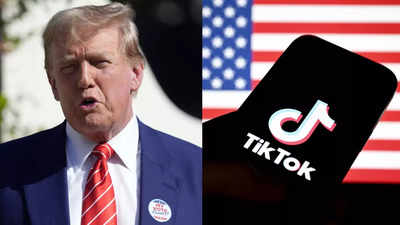As the clock ticks toward April 5, 2025, the fate of TikTok in the United States hangs in the balance. The wildly popular short-video app, used by approximately 170 million Americans, faces a potential shutdown unless its Chinese parent company, ByteDance, finalizes a sale to a non-Chinese buyer. This deadline stems from a tumultuous legal and political saga that has pitted national security concerns against the app’s cultural and economic significance. With President Donald Trump at the helm of negotiations, the situation remains fluid, but the stakes couldn’t be higher.
Why April 5 Matters for Tiktok
The current deadline traces back to the Protecting Americans from Foreign Adversary Controlled Applications Act, signed into law by former President Joe Biden in April 2024. The legislation gave ByteDance until January 19, 2025, to divest TikTok’s U.S. operations or face a nationwide ban, citing fears that the Chinese government could exploit the app to harvest user data or manipulate public opinion. When that deadline arrived, TikTok briefly went dark on January 20, 2025 — coinciding with President Trump’s first day back in office after his re-election.
However, Donald Trump quickly intervened. On January 20, he issued an executive order delaying enforcement of the ban by 75 days, pushing the deadline to April 5. This move allowed TikTok to flicker back to life, but it was a temporary reprieve. Without a completed sale by the new deadline, the app could once again vanish from U.S. app stores and internet services, leaving millions of users, creators, and businesses in limbo.
Donald Trump’s Role: A Deal in the Works
Since taking office, President Trump has taken an unusually hands-on approach to resolving TikTok’s fate. Once a vocal proponent of banning the app during his first term, he has softened his stance, crediting TikTok with helping him connect with younger voters during the 2024 election. Speaking to reporters aboard Air Force One on March 30, 2025, Trump expressed optimism, stating, “We have a lot of potential buyers,” and “there’s tremendous interest in TikTok.” He added, “I’d like to see TikTok remain alive,” signaling his intent to broker a deal before the April 5 cutoff.
Reports suggest that negotiations are coalescing around a plan where major non-Chinese investors in ByteDance—potentially including tech giant Oracle—would increase their stakes and acquire TikTok’s U.S. operations. Oracle, already TikTok’s primary cloud provider, has been floated as a key player, possibly tasked with safeguarding American user data to address security concerns. Other rumored bidders include Microsoft, a coalition of billionaire investors, and even AI startup Perplexity, though Trump has not publicly named the frontrunners.
Vice President JD Vance has echoed Trump’s confidence, stating last week that he expects “the general terms of an agreement” to be reached by early April. However, the deal’s success hinges on Beijing’s approval—a major sticking point given TikTok’s valuation and the proprietary algorithm at its core, which ByteDance has resisted relinquishing.
The Tariff Twist for Tiktok
In a surprising twist, Trump has suggested leveraging trade policy to secure China’s cooperation. On March 26, he told reporters he’d be willing to reduce tariffs on Chinese goods if Beijing greenlights a TikTok deal. This proposal marks a shift from his earlier threats to impose tariffs if China blocked a sale. With tariffs already raised to 20% on Chinese imports in February 2025 (up from 10%), Trump appears to be using economic pressure as a bargaining chip—a strategy that underscores the geopolitical stakes at play.
What Happens if the April 25 Deadline Passes
If ByteDance fails to divest by April 5 and Trump doesn’t extend the deadline further, TikTok could be banned outright. App stores would remove it, and internet hosting services would block access, as they briefly did in January. For users, this would mean losing a platform that’s become a hub for entertainment, education, and commerce. Small businesses, which rely on TikTok for marketing, and content creators, who’ve built livelihoods on the app, would face significant disruption. Globally, the loss of the U.S. market—TikTok’s largest—could reshape the app’s ecosystem, as American creators drive much of its viral content.
TikTok itself has ramped up efforts to sway public opinion. A recent ad campaign, launched in February 2025, portrays the app as a “savior of Americans,” highlighting stories like that of a young woman who found a kidney donor through TikTok. The company has spent over $7 million on ads this year, per AdImpact, framing itself as a force for good as the deadline looms.




